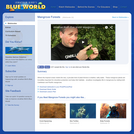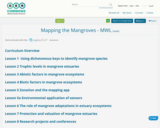
This resource is a video abstract of a research paper created by Research Square on behalf of its authors. It provides a synopsis that's easy to understand, and can be used to introduce the topics it covers to students, researchers, and the general public. The video's transcript is also provided in full, with a portion provided below for preview:
"Diazotrophs, microorganisms that “fix” atmospheric nitrogen into ammonia that plants can use, are important members of mangrove ecosystems. Diazotrophic community structure and nitrogen fixation rates are strongly regulated by the environment, but how they change with sediment depth remains unclear. To find out, a new study investigated biological nitrogen fixation in sediment cores taken from a mangrove ecosystem in China. The results showed that diazotroph diversity decreased with depth, and salinity was the main factor that influenced the diazotrophic community structure. Communities above vs. below 50 cm were markedly different. In sediments shallower than 50 cm, Anaeromyxobacter, Rubrivivax, Methylocystis, Dickeya and Methylomonas dominated, while Agrobacterium and Azotobacter dominated from 50 to 100 cm. The nitrogen fixation rate and the abundance of nitrogen fixation genes increased with depth, while the abundance of genes related to nitrification and denitrification decreased..."
The rest of the transcript, along with a link to the research itself, is available on the resource itself.
- Subject:
- Biology
- Life Science
- Material Type:
- Diagram/Illustration
- Reading
- Provider:
- Research Square
- Provider Set:
- Video Bytes
- Date Added:
- 03/01/2022

